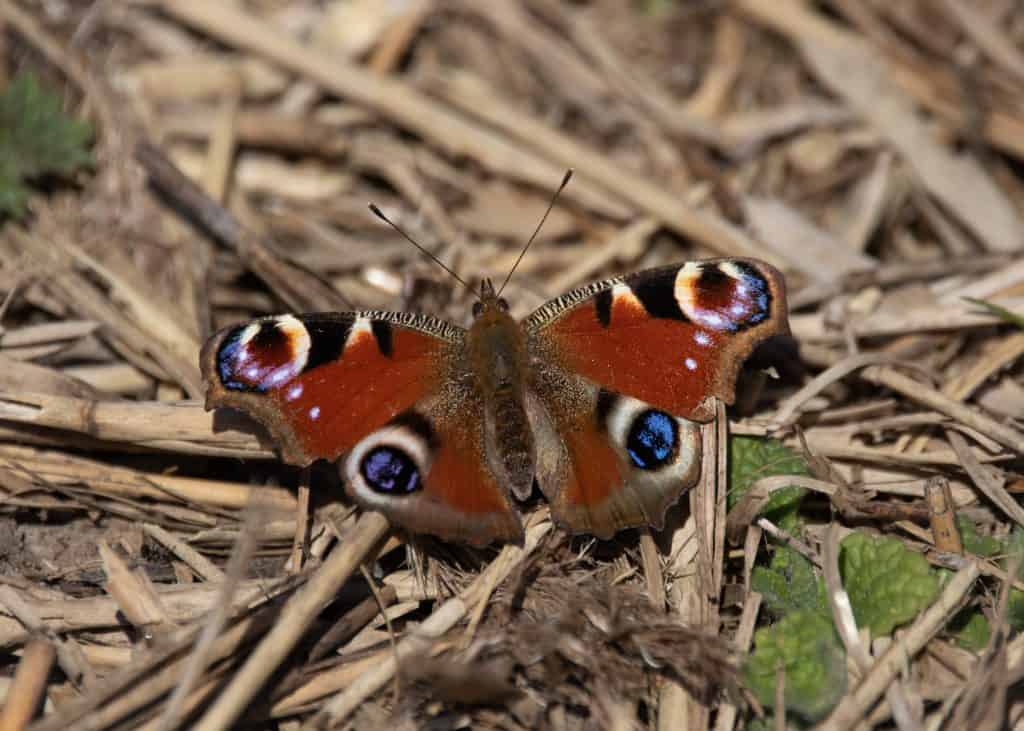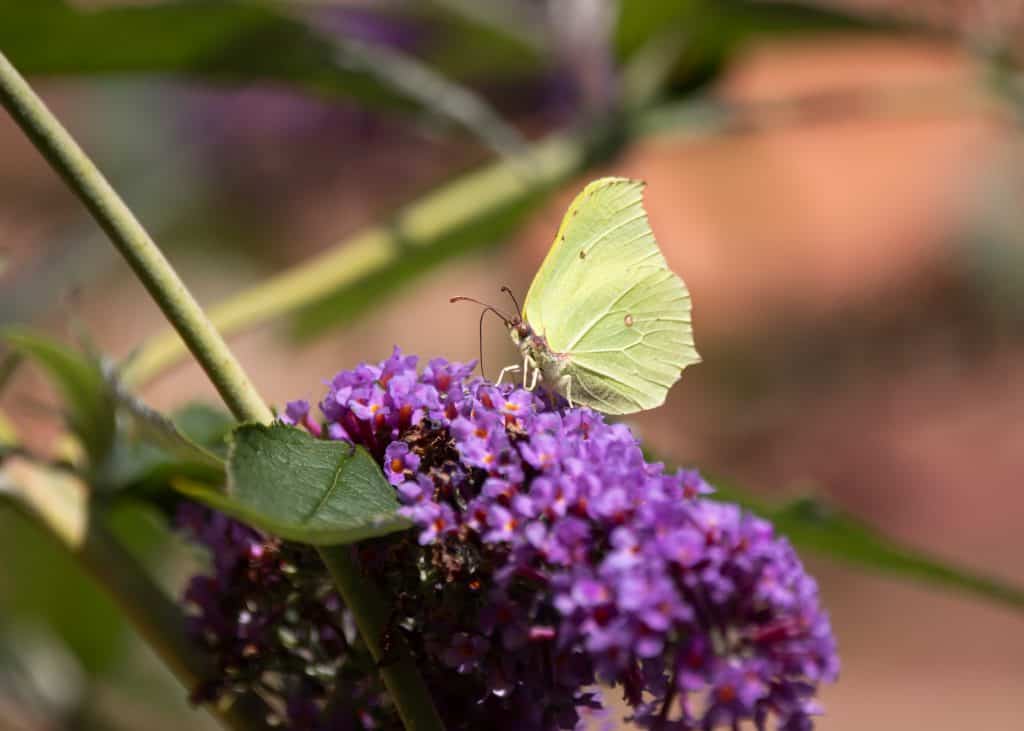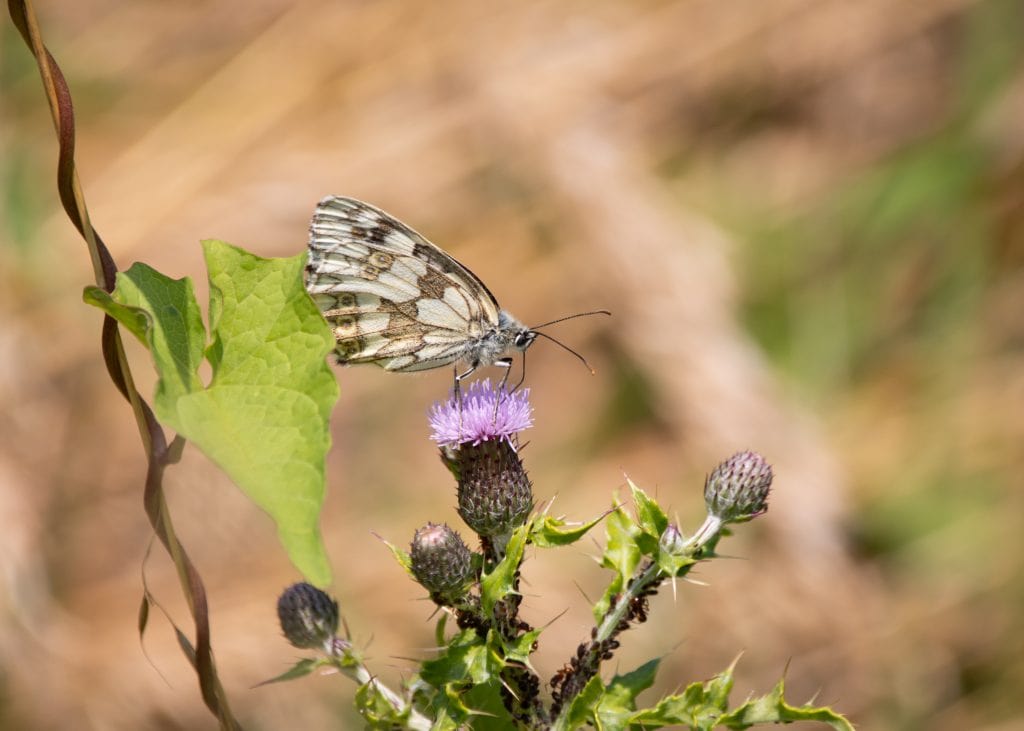Senior Bird Keeper, Ryan
Just to set the scene, despite being a bird nerd, I absolutely adore butterflies. Unfortunately, I started here at Wingham after the Butterfly House, inside the Tropical House, closed. So, I missed out on meeting Wingham’s fluttery friends. However, just like the rest of the bird team, I often get confronted by guests with the question “where did your butterflies go”. Often, after replying to them stating they’re no longer here, guests appear to be disappointed. At first, in a weird kind of way, their disappointment warmed my heart. Not because I am horrible, but because I’m glad that so many people seem to share my infatuation with butterflies.
That should be it, blog done. Yet overthinking is a wonderful thing… See I realized something about all the guests asking me about the butterflies, none of them are males in my age range. It got me thinking that despite it being 2023, I fear that there is still a “feminine” stigma attached to admitting a love for butterflies. As many of the keepers here at Wingham can assure you, I am by no means the manliest of men. However, I am your typical British male. I love Beer, boxing and football. It just so happens I also love butterflies, arguably even more than those three. This stigma really annoys me as people usually think of butterflies in a certain light. Delicate, feminine and most importantly, harmless.
Society couldn’t be more wrong about them. Butterflies can be aggressive, disgusting and deviants. I like to think of them as nature’s bad boys, that they have the potential to become nightmare fuel when given the opportunity! One great example is the average butterfly diet.
Diets
Most people assume that their diet is exclusively nectar from a wide variety of flowers. With nectar providing a key part of their diet, it’s merely that, a part. The Nymphalidae family, the largest family of butterflies consisting of over 6000 species worldwide, are great examples. They often feed from flowers yes, but they love a nice, juicy, rotting carcass to drink from too. See butterflies need to consume liquid-like matter, so the fermented juices from a dead body, due to the process of decay, makes a great opportunity for this.
Being a keeper for 8 years, I have seen the most butterflies in a white lion enclosure. The combination of the buddleia in the enclosure and the abundance of decaying and discarded meat, made it a butterfly paradise. I have seen many daring Red Admirals (Vanessa atalanta) and brave Peacocks (Aglais io) land on the chops of a lion after they have eaten due to the blood on their face. The sheer minerals it would take to just start slurping up blood from a lion’s fur, is impressive.
Purple Emperor
If that wasn’t gross enough, then let me introduce to you the jewel of the UK butterfly scene. See in the UK we unfortunately only have 58 species. One species though, is so beautiful, they have become a symbol of perfection for many lepidopterists (someone who studies butterflies and moths, or as I like to label them, butterfly geezers). I am talking about the Purple Emperor (Apatura iris).
This species, for hundreds of years, has driven men to madness with their beauty and difficulty when it comes to catching them. Collectors back in the day had to fashion incredibly large nets to catch them due to them spending most of their time in dense oak tree canopies. They mainly stay up there to feed on honeydew. In itself, honeydew is gross as it is the waste product that is secreted from an aphid’s anus. The only food item that lures these emperors down to the forest floor is a lovely pile of fresh, steaming, fragrant animal poo. Arguably one of the most beautiful creatures to exist, that has more men chasing them than the Kardashians combined, loves to tuck into poop. They’re not apposed to urine either, the butterflies that is, not the Kardashians…
Butterflies and the Battle of Britain
Now onto aggression! The butterfly family Papilionidae, the swallowtails, has thousands of members. However, in the UK we have one species, the old-world swallowtail (Papilio machaon). This is our largest species, and it can only be found in the Norfolk broads, UK wise.
In the brilliant book “The Butterfly Isles” by Patrick Barkham, it is stated that Winston Churchill himself had an infatuation with this species. Churchill would release swallowtails onto his massive gardens and plant things accordingly to accommodate the feeding of their larvae, caterpillars. The reason for this infatuation was not due to their beauty alone, but their moxie. See swallowtails are incredibly aggressive to anything that flies over their territory. Other butterflies, bees and even birds will be bombarded by an angry swallowtail if they get too close. All butterflies are notoriously territorial. Often if you see two butterflies chasing each other, it most probably is two males having a dogfight. Swallowtails though, just take aggression to a whole new level. Some say that their ariel moxie is what inspired Churchill and one could easily draw links between them and the battle of Britain.
Parasitic butterflies
For the last gross British butterfly fact, I could talk about how certain butterflies love to feed on fermenting fruits, but I feel upping the ante is the only logical way to end this blog. So let me introduce you to the Large Blue (Phengaris arion), Britain’s brood parasitic butterfly! The Large Blue is a member of the Lycaenidae family, now this family of butterflies are well known for their parasitic caterpillars worldwide. In the UK however, we only have the Large Blue that does this.
A caterpillar’s growth is measured in stages called instars. Each time they molt, they move into a new instar, there are 5 in total before they pupate. Large Blue caterpillars start off life on their larval food plants, wild thyme, but after their fourth instar, they suddenly fall on the ground on purpose. I don’t know why they do this; they were having such a wild thyme on that larval food plant!
They secrete mimicry pheromones to attract ants from the genus Myrmica. The pheromones will trick the ants into mistaking them for their own larvae and as a result, take them back to their colony. Most brood parasitic butterfly species use the “cuckoo” method by mimicking noises that a larval queen ant would make thus causing the workers to feed and care for the caterpillar, prioritizing it over the real ant larvae.
Large Blues like to make it more exciting; they prefer to just pose as a normal ant larvae and eat any ant larvae that has become a pupa! A far more exciting approach in my opinion! However, the success rate for Large Blues is fairly low and only enjoy successes with specific species of Myrmica over others. Once detected by the ants as an imposter, they simply get eaten. If successful the Large Blue caterpillar will pupate into an adult (the buzz word for an adult insect is an imago) climbing their way out of the nest and flying away.
I hope this has changed your thoughts on butterflies and I hope you think twice when one flies past, maybe even triggering a nervous sweat. All jokes aside, thank you for reading and I hope this has sparked some sort of curiosity from a more varied demographic as you read this! ????
Enjoy some of my shots of various butterfly species that you will find flying wild within Wingham Wildlife Park!








